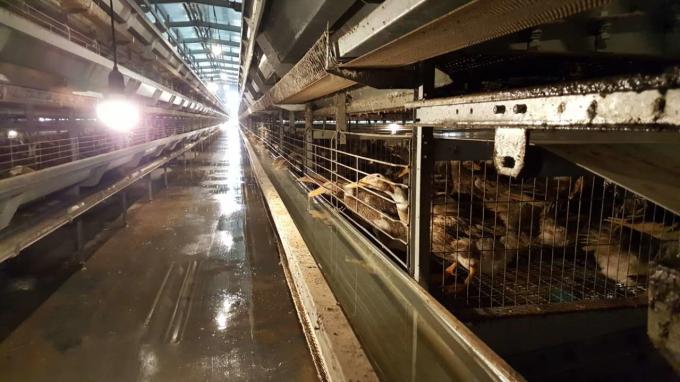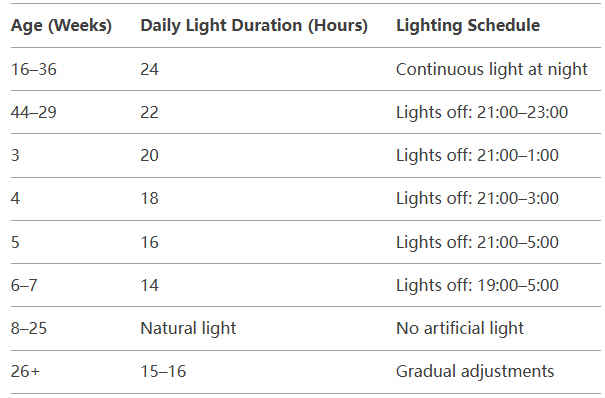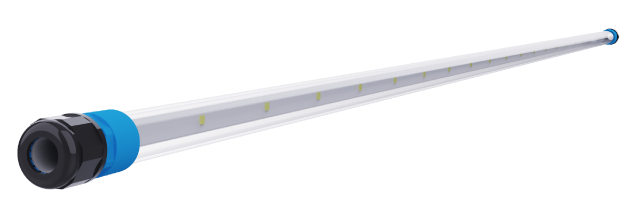Duck Coop Lighting Control: Best Led Light for Duck House

Directory:
1. Introduction
2. Physiological Effects of Light on Ducks
3. Key Lighting Parameters
4. Regulation Strategies
Lighting is a critical environmental factor influencing the growth, immune function, and reproductive performance of egg-laying ducks. This article synthesizes current research on lighting parameters (intensity, duration, and quality) and proposes practical strategies for optimizing commercial duck coop lighting management. Key findings highlight the importance of balancing natural and artificial light, adjusting photoperiods across growth stages, and mitigating seasonal challenges to maximize productivity and economic returns.
1. Introduction
With the rapid expansion of China’s egg-laying duck industry, standardized environmental control—particularly lighting management—has become essential for improving production efficiency. Unlike chickens, ducks have unique physiological responses to light, necessitating tailored approaches. This review explores the biological mechanisms of light regulation in ducks and provides actionable guidelines for modern farming practices.
2. Physiological Effects of Light on Ducks
2.1 Growth and Development
Light stimulates pituitary gland activity, enhancing metabolism and calcium absorption through UV-induced vitamin D3 synthesis.
Continuous lighting (24L:0D) during early growth stages (2 weeks to market age) improves feed efficiency and energy retention compared to intermittent lighting.
2.2 Immune Function
Darkness promotes melatonin secretion, which enhances antioxidant activity and immune response. Excessive artificial light suppresses melatonin, increasing disease susceptibility.
2.3 Reproductive Performance
Photoperiod Impact: Prolonged light exposure (14–16 hours) accelerates sexual maturity and increases egg production, while short photoperiods delay maturity and reduce yield.
Egg Quality: Optimal lighting reduces abnormal eggs (e.g., thin-shelled or misshapen eggs) by minimizing stress and erratic behavior.
3. Key Lighting Parameters
3.1 Light Intensity
Recommended Range: 20–30 lux for adult ducks. Higher intensities (>30 lux) induce stress, reducing feed efficiency and egg quality.
Challenges: Inconsistent research on ideal intensity for peak laying phases necessitates farm-specific adjustments.
3.2 Photoperiod Management
Growth Stages:
Brooding (0–2 weeks): 24-hour light to encourage feeding.
Rearing (3–8 weeks): Gradually reduce light to 8–10 hours/day to delay sexual maturity.
Pre-lay to Peak Production: Increase light incrementally to 16 hours/day (Table 1).
Critical Rule: Adjust daily light duration by ≤0.5 hours to avoid physiological stress.
Table 1. Recommended for Egg-Laying Ducks Coop Lighting Program

3.3 Light Quality
Red Light: Calms ducks, improves egg production, but delays maturity and lowers fertility.
Blue/Green Light: Enhances growth rate but reduces feed efficiency and egg yield.
Practical Choice: Combine natural light with white LED or incandescent bulbs for balanced outcomes.
4. Regulation Strategies
4.1 Hybrid Duck Coop Lighting Systems
Integrate natural daylight with supplemental artificial light to ensure consistency. Morning light supplementation aligns with natural circadian rhythms.
4.2 Seasonal Adjustments
Summer: Reduce excessive daylight exposure using blackout curtains to prevent premature sexual maturity.
Winter: Maximize sunlight utilization to lower heating costs and improve welfare.
4.3 Infrastructure Design
Ensure uniform light distribution to avoid shadows and stress.
Use durable, low-maintenance fixtures (e.g., incandescent bulbs) for cost-effective operations.
5. Challenges and Solutions
Overlighting in Summer: Leads to aggression (e.g., feather pecking). Mitigate by adding fiber-rich feeds and reducing light duration.
Inconsistent Research: Tailor programs based on breed, housing type, and regional climate.
Effective light management in duck farming requires a nuanced understanding of physiological needs and environmental interactions. By optimizing photoperiods, balancing light spectra, and integrating natural resources, producers can enhance egg yield, duck health, and farm profitability.
6. Best Led Light for Duck House
Led Duck House Lighting bulbs D80



7. Contact Ceramiclite
